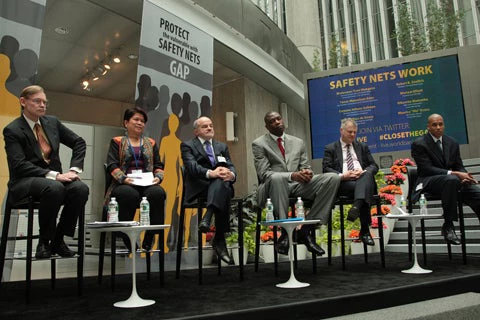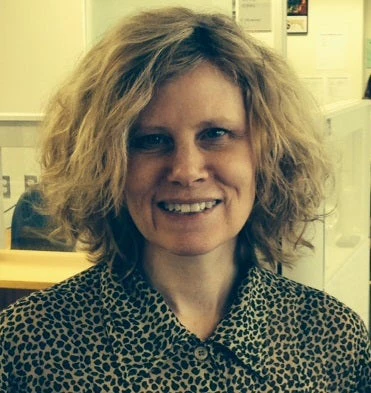From left, Robert B. Zoellick, President, The World Bank; Corazon “Dinky” Juliano Soliman, Secretary of the Department of Social Welfare and Development, Philippines; Romulo Paes de Sousa, Vice Minister of Social Development and Fight Against Hunger in Brazil; Michael Elliott, President and CEO, ONE; Dikembe Mutombo, NBA Global Ambassador; Maurice "Mo" Evans, Washington Wizards. Photo: Simone D. McCourtie / World Bank
Safety nets are needed more than ever to stave off malnutrition, illiteracy and disease in an increasingly uncertain world, but many of the most vulnerable people still lack coverage.
That was the main message of an April 18 live event, Close the Gap: Safety Nets Work, held at the World Bank in Washington in the lead-up to the World Bank-IMF Spring Meetings. The event, which was webcast and live-blogged in English, French, Spanish and Arabic, followed the release of a new World Bank Social Protection and Labor strategy calling on countries to invest in stronger social protection and labor systems.
An online audience sent feedback and questions to a panel including World Bank President Robert B. Zoellick, ONE President and CEO Michael Elliott, high-ranking officials from Brazil and the Philippines, and two basketball stars. They were flanked by banners urging people to “act equal,” “create jobs,” and “protect the vulnerable with safety nets.”
The Bank estimates three out of five people in developing countries lack access to a safety net. In the poorest countries, the picture worsens to one in five people, or 80%.
“…We have to close the gap,” said Zoellick. Some countries need to build safety nets, others to improve them. The Bank will seek to work with each client country to try to help. “We need action for each and every one,” he said.
He said safety nets should be in place before a crisis hits to build resilience and provide access to opportunity.
Ethiopia’s safety net program increased the resiliency of people in the region and “made a difference” during the Horn of Africa drought last year, said ONE’s Elliot. Safety nets are a “very, very smart investment” when compared with the effects of shocks when there is not built-in resiliency, he said.
Corazon “Dinky” Juliano-Soliman, the Secretary of Social Welfare and Development in the Philippines, said the country’s safety net program covers some 3 million families—including 6.5 million children--and has kept families together, children in school, and increased food consumption. “We have invested in the future of our country, its children, and to break intergenerational poverty.”
Brazil’s Bolsa Familia safety net program, which is now covering more than 13 million families, was a response to the needs of the population, said Romulo Paes de Sousa, Vice Minister of Social Development and Fight Against Hunger in Brazil. “We’re now moving ahead, organizing 120 actions in order to fulfill their demands, and expecting to eradicate extreme poverty in Brazil by 2014.”
Watch a video that examines how safety nets impact families in Brazil and Ethiopia:
Basketball All-Star Dikembe Mutombo, the National Basketball Association’s global ambassador, said Africa urgently needs safety nets to “close the gap” on health care and nutrition. He has personally invested $24 million toward efforts to improve maternal health care in Africa. Maurice "Mo" Evans of the Washington Wizards said protecting vulnerable people is a global concern. “I want to let people know this is a world problem--developing countries aren’t alone.”
Follow the discussion on Twitter at #closethegap.



Join the Conversation